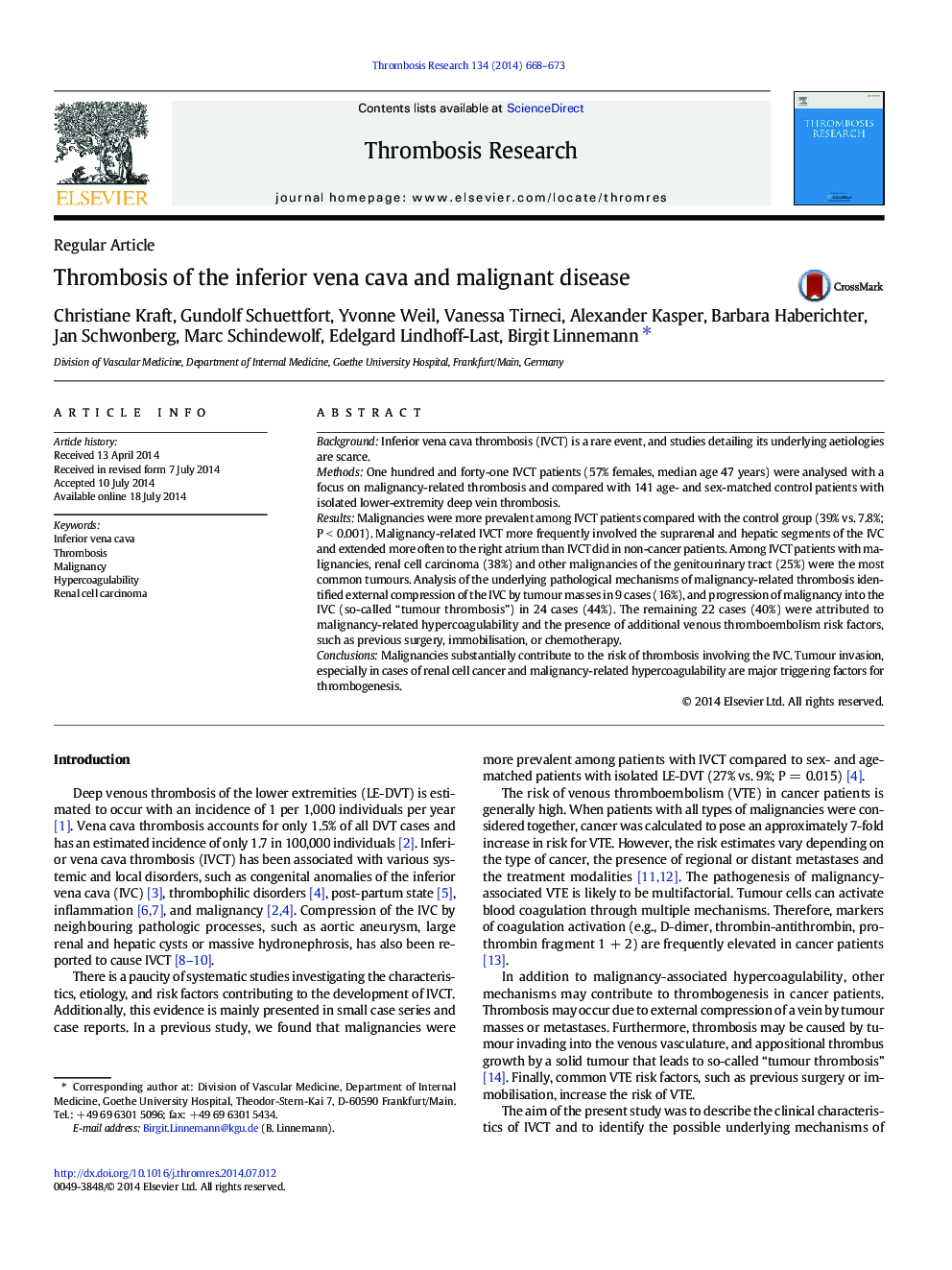| کد مقاله | کد نشریه | سال انتشار | مقاله انگلیسی | نسخه تمام متن |
|---|---|---|---|---|
| 6002024 | 1182963 | 2014 | 6 صفحه PDF | دانلود رایگان |
- Thrombosis involving the inferior vena cava (IVCT) is rare.
- Malignancies seem to contribute substantially to the risk of IVCT.
- The pathogenesis of malignancy-associated IVCT has not been investigated yet.
- Renal cell carcinoma is the most common tumour type among IVCT patients.
- Tumour invasion and hypercoagulability are major triggering factors for IVCT thrombogenesis.
BackgroundInferior vena cava thrombosis (IVCT) is a rare event, and studies detailing its underlying aetiologies are scarce.MethodsOne hundred and forty-one IVCT patients (57% females, median age 47Â years) were analysed with a focus on malignancy-related thrombosis and compared with 141 age- and sex-matched control patients with isolated lower-extremity deep vein thrombosis.ResultsMalignancies were more prevalent among IVCT patients compared with the control group (39% vs. 7.8%; PÂ <Â 0.001). Malignancy-related IVCT more frequently involved the suprarenal and hepatic segments of the IVC and extended more often to the right atrium than IVCT did in non-cancer patients. Among IVCT patients with malignancies, renal cell carcinoma (38%) and other malignancies of the genitourinary tract (25%) were the most common tumours. Analysis of the underlying pathological mechanisms of malignancy-related thrombosis identified external compression of the IVC by tumour masses in 9 cases (16%), and progression of malignancy into the IVC (so-called “tumour thrombosis”) in 24 cases (44%). The remaining 22 cases (40%) were attributed to malignancy-related hypercoagulability and the presence of additional venous thromboembolism risk factors, such as previous surgery, immobilisation, or chemotherapy.ConclusionsMalignancies substantially contribute to the risk of thrombosis involving the IVC. Tumour invasion, especially in cases of renal cell cancer and malignancy-related hypercoagulability are major triggering factors for thrombogenesis.
Journal: Thrombosis Research - Volume 134, Issue 3, September 2014, Pages 668-673
